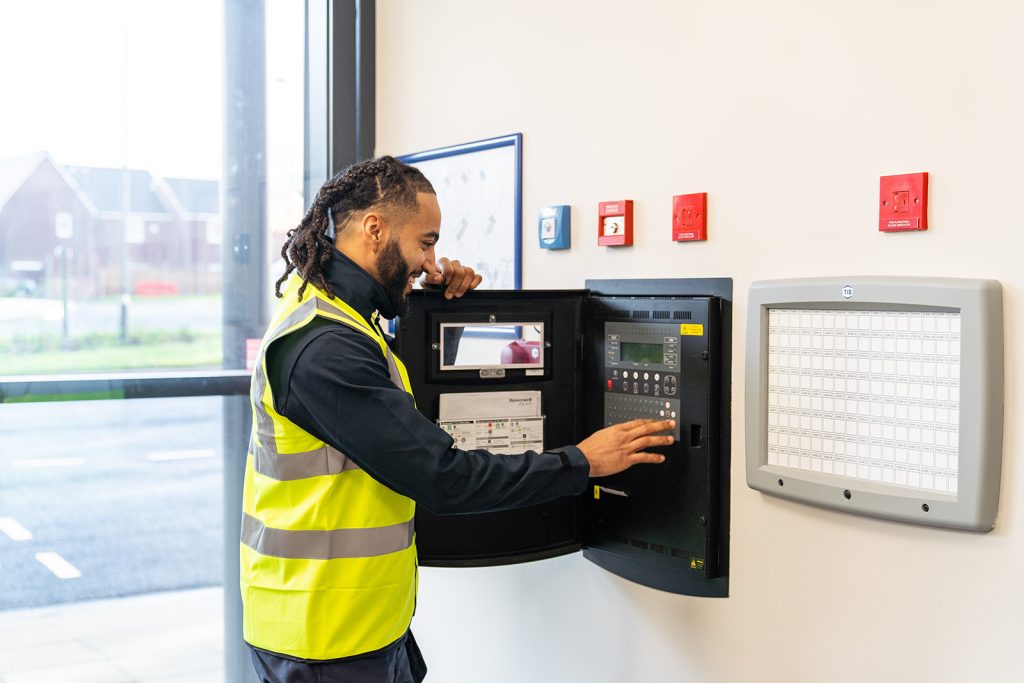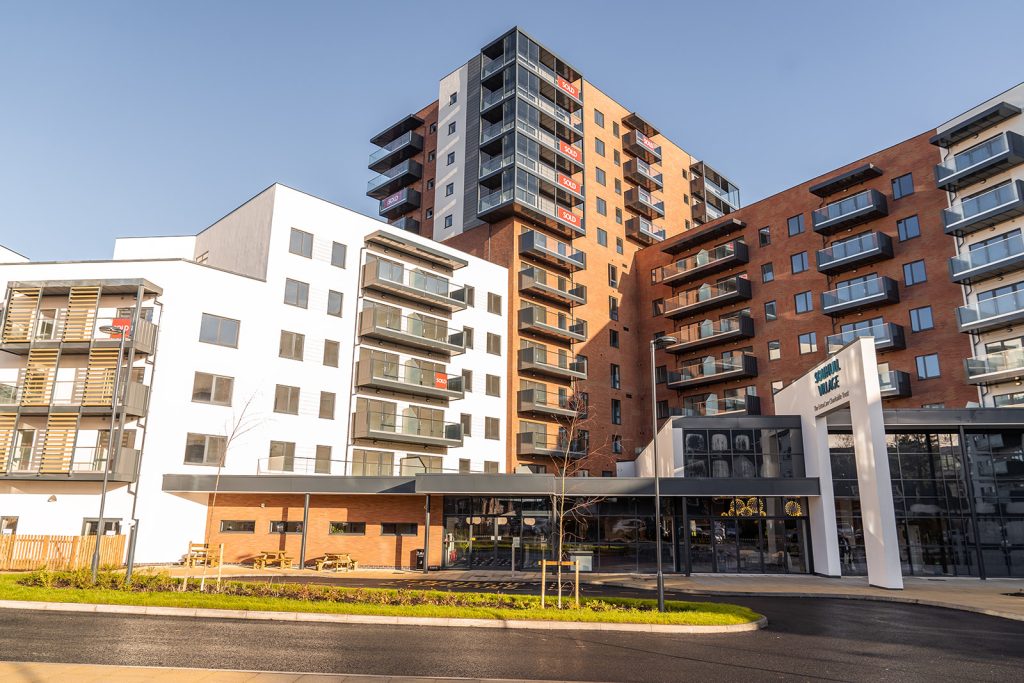How we did it
A multifaceted fire strategy, we began deciphering how we were going to execute the configuration of this entirely unique and novel project.
The desired system would allow fire detectors to discern a real fire from a false alarm (such as burning toast or forgetting a pot on the stove) as well as minimise disturbances to other tenants when one alarm goes off in a single, private apartment. A messaging system would be incorporated which, when a smoke detector goes off, would alert staff with a text and, through voice activated commands in each flat, direct residents on the appropriate action to take. This was a challenge at first but with the release of Honeywell’s CLSS tool, an industry-leading cloud platform that enables enhanced fire safety features, we were able to track the fire alarm for each individual flat and accurately alert site managers in the event of a potential fire to take the necessary actions. We also had to ensure that, in the event of a real fire with spreading potential, our system could operate any automatic opening vents and close any fire doors, intelligently detecting heat and smoke to automatically seal off problem areas.
After in depth discussions with ExtraCare, building control, external consultants, and fire-officers, we fleshed out the project plan from start to finish, designed the system and then presented this to all key stakeholders before the project was greenlit as viable.
We took approximately two months to design a truly innovative and intelligent system with features that would allow us to programme each resident’s apartment as its own enclosed area. In the event of smoke/heat detection in a single dwelling, the system would notify staff to investigate but also continually monitor the environment to determine if the activation was a real fire. If the environmental conditions precluded the need to fully evacuate the building then the system would reset itself or, in the event of a real fire, trigger the next phase of the cause and effect which will see neighbouring residents evacuated from that zone.
After the programming and testing phase, which took approximately six months to complete, our highly skilled team of fire engineers began the installation phase consulting the customer throughout and adapting certain aspects of the design framework for the duration of the project’s life cycle. To execute this, we assigned a fire alarm designer to the site, a standard procedure for all major fire alarm projects, who attended the site during installation to identify any changes to the structure which could affect the design. For example, during a visit, the assigned fire alarm designer noted a critical issue with the void space being used as a plenum. This meant the design had to be adjusted to take into consideration the high velocity of air movement which would have affected the detection of fire - potentially adversely impacting the system's ability to utilise its cause and effect mechanisms correctly.











